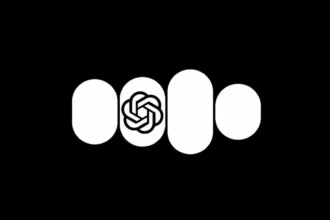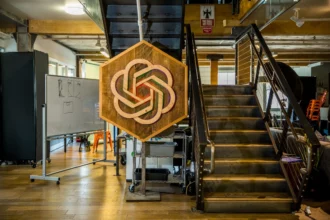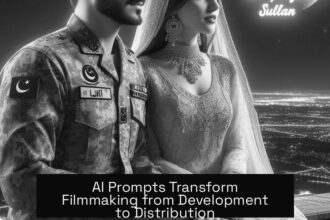Table of Contents
ToggleBen Jennings on AI’s Threat to the Creative Industries
Ben Jennings illustrates growing concerns about the impact of artificial intelligence (AI) on the creative industries, highlighting risks such as job displacement, intellectual property issues, and ethical challenges.
The Core Threats to Creativity
AI introduces automation in creative tasks. Tasks like illustration, music composition, and writing, traditionally done by artists, face AI-generated competition. This can reduce demand for human creativity and undermine professional livelihoods.
Ben Jennings’ cartoon, featured in The Guardian, uses visual commentary to stress how AI may overshadow original human inputs. The artwork reflects worries about AI’s role in diminishing the value of creative skills.
Intellectual Property and AI
- AI-generated content challenges existing copyright laws.
- Questions arise about authorship when machines produce art.
- The creative industries need clear policies to protect human creators.
Current legal frameworks often do not recognize AI as an author, leaving uncertainty about rights to AI-generated works.
Implications for Arts Policy and Computing
Arts policy must address AI’s influence on cultural production and support human artists. Policymakers face the task of balancing innovation with protection for creators.
Advancements in computing fuel AI capabilities, enabling machines to mimic creative processes more convincingly. This technical progress accelerates the debate on AI’s place in art and culture.
Conclusion
- Ben Jennings highlights AI as a tangible threat to creative professionals.
- AI challenges intellectual property norms and artistic authenticity.
- Arts policy needs to evolve to protect human creativity amid AI growth.
Ben Jennings on the Threat Posed by AI to the Creative Industries – A Cartoon Perspective
What does Ben Jennings say about the threat AI poses to the creative industries? Simply put, his cartoon highlights the growing concerns that AI’s rapid involvement in creative fields could overshadow human artists and shake up traditional practices.
So, let’s take a closer look at this unique angle. Ben Jennings, the renowned cartoonist for The Guardian, uses his art to stir a conversation around artificial intelligence’s impact on creativity. His caricature-style illustrations don’t just entertain—they offer a spotlight on an evolving problem. Through satire and wit, Jennings personifies AI as a looming force that might swallow the creative spirit. A powerful way to raise alarm, right?
Jennings taps into the tension between technology and artistry that is relatable across the creative industries. From cartooning to painting, writing to music, creatives face a crossroads. AI tools promise efficiency and new capabilities but also threaten to replace traditional roles. The question is, where do we draw the line?
What exactly makes AI a “threat”? It all boils down to intellectual property. AI systems learn from a pool of existing human-created content—images, texts, music. This raises serious copyright questions. When AI churns out a cartoon, who owns it? The program? The user? The original artists whose work trained the AI? These are not just theoretical puzzles; they strike at the heart of arts policy and how societies value creativity.
Imagine this: an AI mimics Ben Jennings’ style perfectly. Is that tribute, theft, or something new entirely? The cartoonist’s concern echoes in many artist circles. They worry AI might dilute originality or commodify their craft to the point creativity loses value. This fear isn’t unfounded. Many art-related jobs are already being transformed by computing innovations that automate routine tasks.
Here’s a concrete example: AI-driven tools that design logos or write scripts in seconds. Sounds efficient, but what happens to seasoned designers or screenwriters? Jennings’ cartoon warns of a world where human touch is side-lined for algorithms’ speed. Creatives can’t help but ask—will thoughtful, nuanced work survive this era?
But it’s not all doom and gloom. Ben’s cartoon also opens the door for discussing how AI might augment rather than annihilate creativity. Could artists harness AI as a tool? For instance, AI-generated sketches might help brainstorm ideas faster, letting artists focus on intricate details. Or writers might use AI to draft background material, freeing them up for refining themes and style. The key lies in balance and thoughtful arts policy.
From a policy perspective, governments and institutions face a challenge. How to protect artists’ rights while encouraging innovation? Legal frameworks must evolve to address digital creation realities. Intellectual property laws that worked in a pre-AI era struggle against machine learning’s vast data hunger. Jennings, through his visual commentary, reminds policymakers to heed these shifts.
Moreover, public awareness plays a role. When audiences understand the nuances behind AI artworks, they can make informed choices about supporting human-made versus AI-generated art. Transparency about AI use in creative works could become the norm.
Ben Jennings’ cartoons function as a narrative for this tech-versus-art drama. Drawing attention with humor and sharp insight, they make complex topics accessible. They serve as a call to conversations around AI’s role not just as a tool, but as a disruptor of creative culture.
So, what can creatives do in this AI age? Here are some actionable tips inspired by Jennings’ perspective:
- Protect your intellectual property: Understand your rights and seek legal counsel if needed.
- Embrace new tools: Experiment with AI to enhance your creative process, not replace it.
- Stay original: Focus on storytelling, emotion, and the human element AI can’t replicate.
- Engage in policy discussions: Voice your concerns to help shape laws around AI and creativity.
- Educate your audience: Share how you create and why human creativity matters.
At the intersection of creativity and computing, the discussion is just heating up. Ben Jennings’ cartoons are more than simple drawings—they are a mirror reflecting fears, hopes, and ongoing debates about technology’s march into the arts.
Wondering how you feel about AI-generated art? Do you think machines can ever replace human creativity? Feel free to share your thoughts!
Illustration credit: Ben Jennings/The Guardian
What is the main concern Ben Jennings raises about AI in the creative industries?
Ben Jennings highlights that AI poses a threat to creative jobs by potentially replacing artists and writers with automated tools.
How does Ben Jennings use cartoons to comment on AI’s impact?
He uses cartoons as a visual critique to show the tension between human creativity and AI’s growing role in producing art and content.
What role does intellectual property play in the AI debate according to the cartoon?
Intellectual property concerns arise because AI can use existing creative works without proper authorization, challenging artists’ rights.
Does the cartoon suggest AI could change arts policy?
Yes, it implies that arts policies may need updating to protect human creators amid increasing AI involvement.
How does computing relate to AI’s influence on creative fields in the cartoon?
Computing powers AI systems that can generate art, raising questions about technology’s role and limits in creativity.





